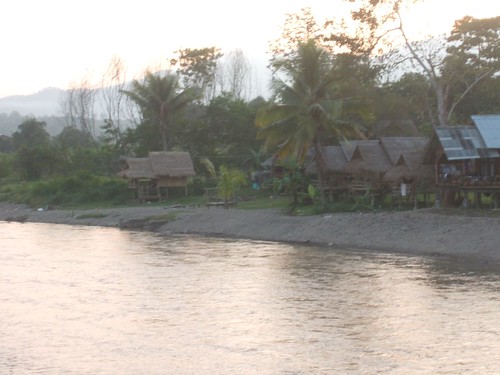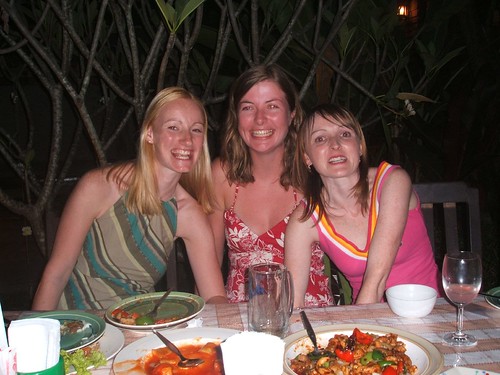Hanoi and Ha Long Bay, Vietnam
Monday to Saturday,
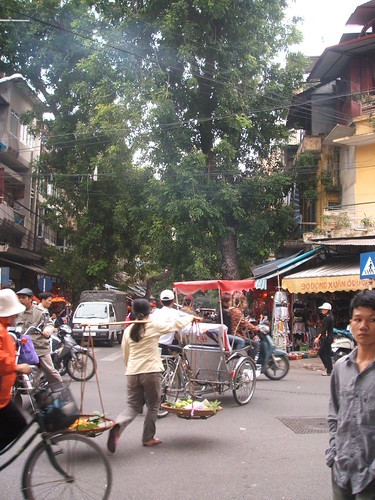 27 November - 1 December 2006
27 November - 1 December 2006Thanks to the (Very) Rough Guide, we traipse around Hanoi for ages looking for the "Queen Salute" hostel. According to the RG's map it is situated beside the city's opera house. Alarm bells should have started ringing at this unlikely location. Sure enough, the site on the map is occupied by a plush Hilton hotel. We check the guide again and notice that the address of the hostel is in a completely different part of the city.
We sit on the steps of the opera house and resist torching the guidebook on the spot. At this stage, about two hours into our stay in Vietnam, we feel we can make one observation with confidence: here people are persistent, even by Asian standards, when it comes to selling stuff. We are pursued by hordes of taxi drivers, cyclo drivers, moto drivers, T-shirt sellers etc. who interpreted "No, thank you" as an invitation to escalate their sales pitch. Finally we found a taxi that could take us to the hostel for a decent price. After one final small bit of confusion - the hostel had recently changed its name to "Hanoi Spirit" - we managed to sort out a room for the night.
The next day, we walk around the pleasant Hoan Kiem Lake and enjoy the hustle and bustle of Hanoi's old quarter, including the Cho Dong Xuan covered market. The traffic here is like Michelangelo's "The Last Judgement" but everybody is on a motorcycle. Thousands of motorcycles clog the streets and it takes a bit of nerve to take them on. Pathways serve as parking lots for the motorcycles so pedestrians have to skirt along the streetside, hoping not to get clattered. (The tip we have been given for crossing the road is to walk purposefully across the street and not to stop. The traffic will drive around you. If you stop, you are in trouble. This has worked so far.) The speed and noise and fumes really get the adrenalin racing but the locals look on serenely as if it the scene is one of water gently lapping the shore. We have heard that the traffic in Saigon is worse. Body armour and lollipop signs are on the shopping list.
We go to a Vietnamese water puppet show: puppeteers behind a screen manipulate puppets that are half-submerged in water on the stage (Bosco meets Waterworld, on a slightly lower budget). The stories are hard to follow as there are no subtitles or descriptions given in the theatre programme. Alot of fire-breathing dragons and water snakes are involved. We leave the theatre confused.

The following day we make the popular trip to Ha Long City, about 4 hours by bus from Hanoi. The plan is to spend a night on a tourist boat anchored out in Ha Long Bay and spend the following night on nearby Cat Ba Island.
Thankfully the boat is a alot more comfortable than the Mekong slow boat we were herded onto in Laos. Again the passengers are all tourists, so we are not getting much contact with the locals. We meet Conor and Gar from Dublin and Antonie and Stephanie from Brittany, who are good company. The boat chugs over the peaceful waters between the karst rock formations and "floating villages" that make Ha Long Bay so beautiful. The weather is a bit overcast but not as bad as the previous week when a tourist boat had been sunk during a freak ice storm. There were no fatalities but all the luggage was lost. Apparently the Vietnamese government paid compensation to each of the passengers of about ten euro.
After dropping anchor (arrgh, matey) we go kayaking into a deathly still lagoon nearby. Our guide insists that we only go out for 20 minutes (the first of many departures from the glossy brochure we had been shown in Hanoi; it had promised swimming, snorkelling, fishing, a beach barbeque and a visit to a "monkey island" where superintelligent chimps would recite Shakespeare. Except for the visit to Monkey Island where a few screeching semi-domesticated monkeys preferred to attack visitors on their way to the toilets than perform Hamlet, none of the above ever happened). As it turned out, we spent the allotted 20 minutes trying to tow a German and Japanese guy back to the boat. They had capsized their kayak but the staff on the boat thought that this was hilarious and preferred to watch the poor fellows drown (despite asking for them, no lifejackets had been given to us for the kayaking) than send a rescue team. Eventually one of the crew paddled out to help, laughing at the suggestion that they should have come out earlier.
On scenic Cat Ba Island we walked through the National Park and later at our fairly isolated hotel met an elderly Vietnamese couple who fled the country in the 1970s and had since lived in Canada. It was interesting to talk to them about their impressions of the changes in the Vietnam in the intervening period. Despite there still being alot of poverty in the country, things are alot better now it seems.
Despite the spectacular scenery, our trip to Ha Long Bay was a bit of a let-down. If anybody was thinking about doing this trip, we would say definitely do it but double-check what the tour company is offering (take a photo of the brochure before you go as one tourist did back in Hanoi - at the time we thought they were being unbelieveably anal) and hold the guides to it.
Still though, it's not all bad: if you want to see more photos of Hanoi and Ha Long Bay click here.
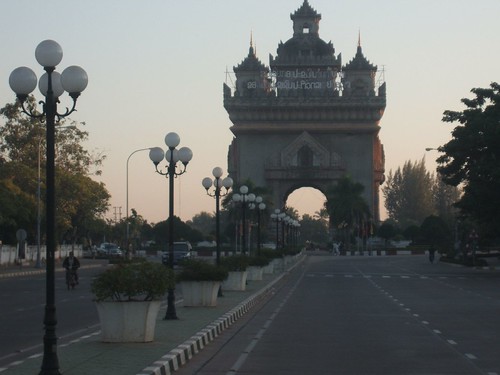
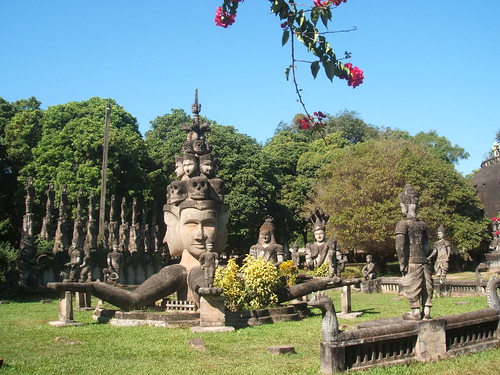
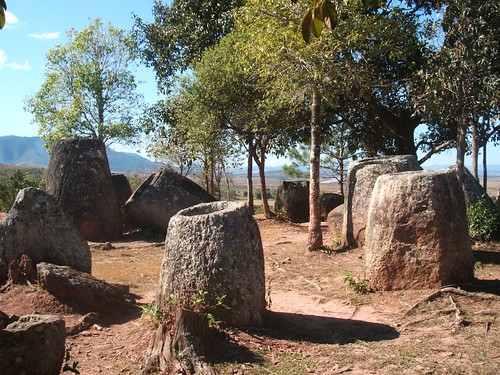
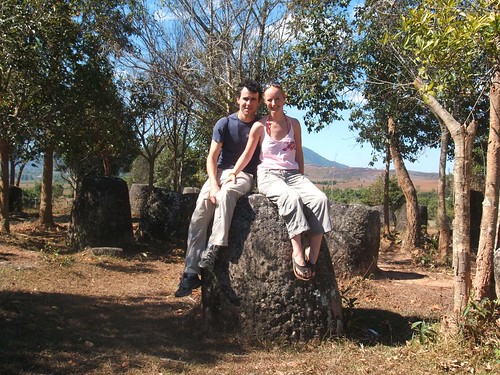
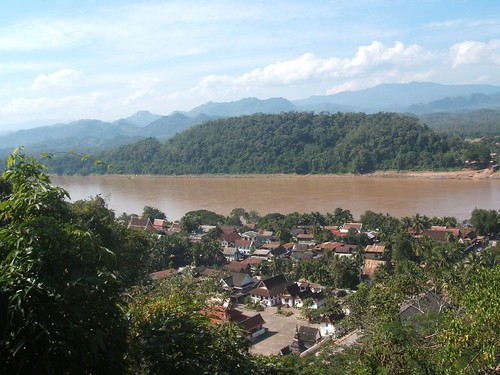
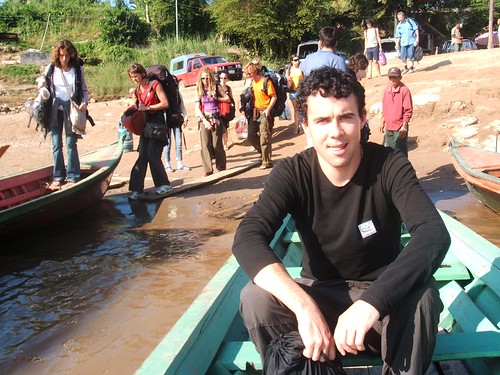
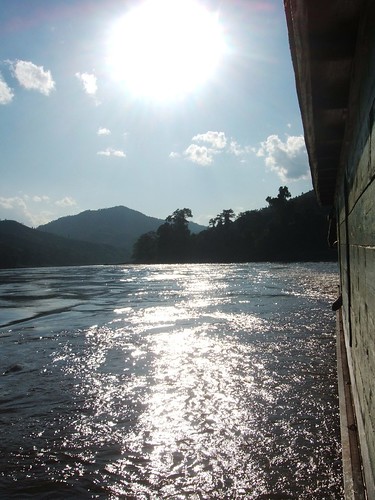 Apart from the fun on the boat, the scenery is spectacular. The river banks sweep up into verdant jungle. We pass by fishermen casting nets, children playing in the river and other boats. When we see them, we feel sorry for the tourists who stumped up for the 6 hour speedboat to Luang Phabang. The engines on the speedboats are deafening. All of the tourists are wearing Dr. No helmets. As they whizz by, they look as if their eyeballs are going to pop out from the g-forces! Even if it was a bit slow, it was two days well spent and we really enjoyed it.
Apart from the fun on the boat, the scenery is spectacular. The river banks sweep up into verdant jungle. We pass by fishermen casting nets, children playing in the river and other boats. When we see them, we feel sorry for the tourists who stumped up for the 6 hour speedboat to Luang Phabang. The engines on the speedboats are deafening. All of the tourists are wearing Dr. No helmets. As they whizz by, they look as if their eyeballs are going to pop out from the g-forces! Even if it was a bit slow, it was two days well spent and we really enjoyed it.